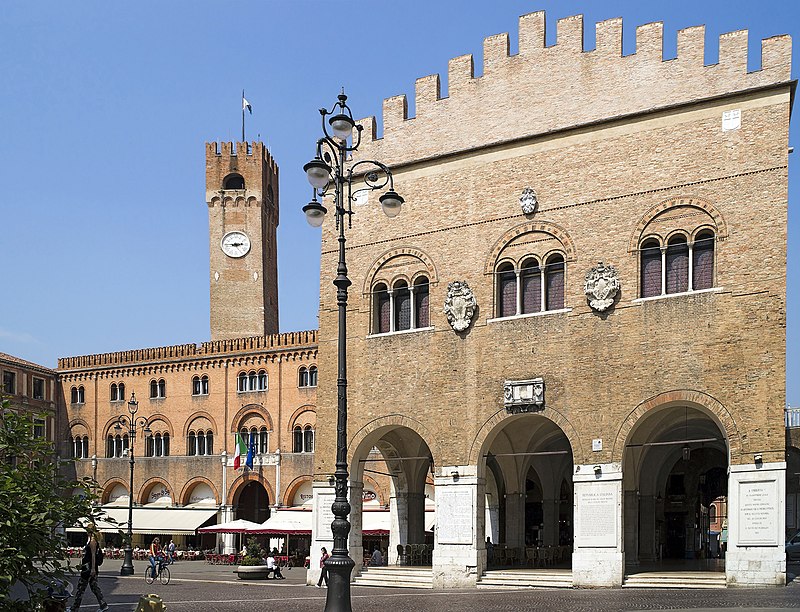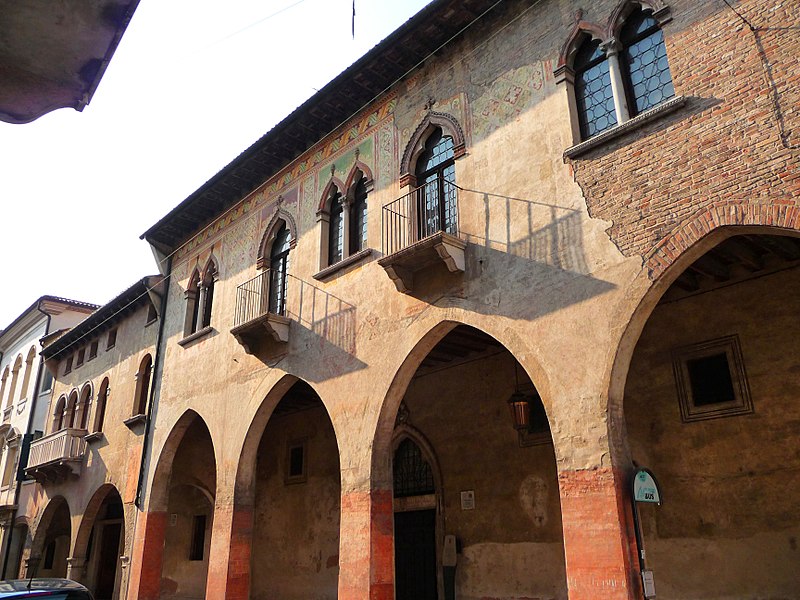
Close to Venice, Treviso is a city known for its commercial activities and its agricultural production, especially in wine and horticulture. The documents that attest to the Jewish presence are very old, dating from the 10th century. They mention the presence in Treviso of a Jewish family, originally from Germany, with shops in the town.
Nevertheless, few documents are found in the following centuries of the Middle Ages. They mainly concern the activities of pawnbrokers, often one of the only professional activities during this period, with more or less possibility to diversify according to the prevailing spirit of tolerance. They suffered religious and financial discrimination, resulting in expulsion in the 16th century.

Jews lived mainly in the area around Via Portico Oscuro , where there was also a synagogue and a mikveh, as well as a prestigious yeshiva. The Jewish community had a cemetery since at least the 15th century in the Borgo Cavour area, where the Municipal Museum is now located. Twenty-seven Jewish tombstones were discovered in 1880 during excavations near the wall of San Teonisio. These gravestones are currently stored in the Ca Da Noal palazzo area.
The modern Jewish cemetery dates from the 19th century and is included in the municipal cemetery of San Lazzaro . At that time a small Jewish community was reconstituted but is no longer in operation.
Sources : Veneto Jewish Itineraries by Francesca Brandes and Encyclopaedia Judaica